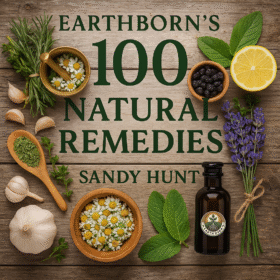-
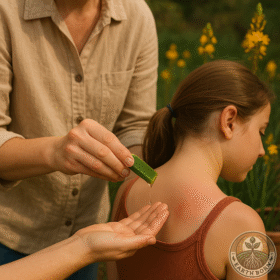
🌱 Bulbine Grower’s Guide (Bulbine frutescens)
🌱 Introduction and historyBulbine frutescens, commonly known as Stalked Bulbine or Snake Flower, is a hardy perennial succulent native to South Africa. A proud member of the Asphodelaceae family, it thrives in the veld and has long been valued for both its ornamental charm and powerful healing properties. Traditionally, it has been called the “living bandage” by communities who relied on its soothing gel for everyday wounds. 💊 Medicinal BenefitsBulbine is packed with anti-inflammatory, antibacterial, and antifungal compounds, particularly acetylated anthraquinones and chrysophanol. The fresh leaf gel is widely used to treat burns, cuts, rashes, insect bites, eczema, and sunburn.…
-

🌱German Chamomile (Matricaria chamomilla)
German Chamomile (Matricaria chamomilla), also called Wild Chamomile or Scented Mayweed, is a delicate annual herb from the Asteraceae family. With its daisy-like white petals and golden-yellow centers, it has been cultivated for centuries across Europe and Asia. Known for its sweet apple-like scent, chamomile was revered in ancient Egyptian, Greek, and Roman traditions as a calming and healing herb. Today, it remains one of the most popular medicinal plants worldwide. 💊 Medicinal Benefits German Chamomile contains active compounds such as chamazulene and apigenin, giving it powerful medicinal uses: 🌿 Anti-inflammatory – eases skin irritations, wounds, and joint pain. 🌿…
-
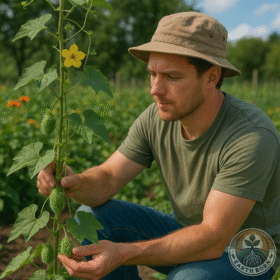
Bushu (Cucumis zambianus)
🌱 Introduction and history Bushu (Cucumis zambianus), also known as the African Wild Cucumber or Zambian Cucumber, is an annual climbing plant in the Cucurbitaceae family — relatives of gourds, melons, and cultivated cucumbers. Indigenous to Southern Africa, it grows naturally in South Africa, Zambia, and Zimbabwe, thriving in grasslands and along fences. Traditionally gathered from the wild, Bushu has been valued not only for its unique spiky green fruits but also for its medicinal and cultural uses. 💊 Medicinal Benefits In traditional African medicine, Bushu has been used for: Digestive support – Leaf infusions may relieve indigestion and mild…
-
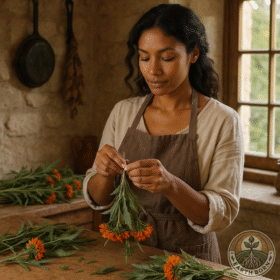
🌱Wild Dagga (Leonotis leonurus)
Wild Dagga (Leonotis leonurus), also called Lion’s Tail or Lion’s Ear, is a striking perennial shrub native to South Africa, particularly the Eastern and Western Cape, KwaZulu-Natal, and Free State. Wild dagga isn’t cannabis; it’s a South African indigenous shrub in the mint family, beloved by sunbirds and bees. It belongs to the mint family (Lamiaceae) and has been valued for centuries both for its ornamental beauty and its medicinal uses. Traditionally used by the Khoikhoi and San people, its vivid orange, tubular flowers resemble a lion’s tail, giving the plant its common name. 💊 Medicinal Benefits Wild Dagga is… Read more…
-
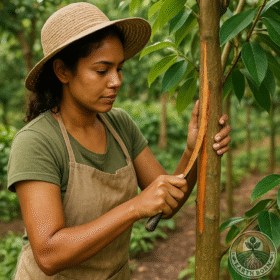
🌱Ceylon Cinnamon (Cinnamomum verum)
Ceylon Cinnamon (Cinnamomum verum), often called True Cinnamon or Sri Lankan Cinnamon, is a highly prized spice native to Sri Lanka and southern India. It belongs to the Lauraceae family and has been cultivated for thousands of years. Ancient Egyptians used it in embalming, Romans valued it for its fragrance, and it was considered more valuable than gold during the spice trade era. Today, Ceylon Cinnamon is celebrated for its delicate, sweet aroma and numerous medicinal properties. 💊 Medicinal Benefits Ceylon Cinnamon contains active compounds such as cinnamaldehyde, eugenol, and linalool, giving it powerful anti-inflammatory, antioxidant, and antimicrobial properties. It… Read more…
-
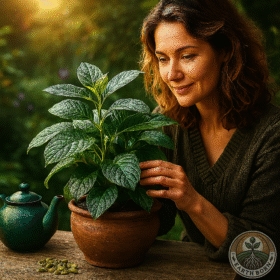
🌱Cardamom (Elettaria cardamomum)
🌱 Introduction and HistoryCardamom (Elettaria cardamomum), often called Green or True Cardamom, is a perennial herb native to the lush forests of southern India and Sri Lanka. Belonging to the ginger family (Zingiberaceae), this aromatic plant has been cultivated for over 4,000 years. Ancient Egyptians chewed the seeds as a tooth cleaner, while traders carried its prized pods along spice routes to Europe and Asia. Today, Cardamom remains one of the world’s most expensive spices by weight, treasured in both culinary and medicinal traditions. 💊 Medicinal BenefitsCardamom is celebrated for its digestive-supporting properties, helping to soothe bloating, indigestion, and nausea.…
-

African mahogany (Khaya senegalensis)
🌱 Introduction and history Khaya senegalensis, commonly known as African Mahogany, is a majestic evergreen tree native to West Africa, particularly Senegal, Nigeria, Ghana, and Mali. Revered for centuries, it is prized for its beautiful reddish-brown timber, which has been used in fine cabinetry, boat building, and musical instruments. Traditionally, African communities also valued its bark and seeds for medicinal preparations. 💊 Medicinal Benefits The bark and seeds of African Mahogany are used in traditional medicine. Key active compounds—triterpenes, flavonoids, and alkaloids—have demonstrated: Antimalarial properties Antimicrobial effects Anti-inflammatory action Relief for gastrointestinal issues like diarrhea and dysentery Treatment for skin… Read more…
-
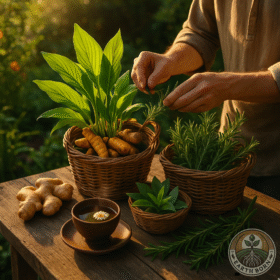
9 Anti-Inflammatory Herbs You Can Grow (and Use!) Right in Your Garden
Because sore knees shouldn’t keep you out of the veggie patch. Why gardeners care about inflammation Pulling weeds, turning compost and lugging watering cans is rewarding—but it can leave joints cranky and muscles achy. Instead of reaching straight for the pill bottle, you can grow your own living “medicine chest” in the beds you already tend. Below are nine herbs with solid research behind them and down-to-earth tips for cultivating and using each one. 1. Turmeric – The Golden Workhorse Why it helps: Curcumin, the bright orange pigment, tamps down the NF-κB pathway (a master switch for inflammation).How to grow:… Read more…
-
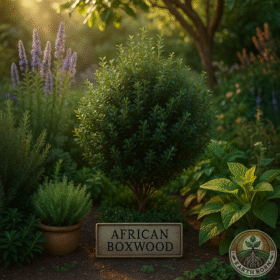
🌱African boxwood (Myrsine africana)
Myrsine africana, known as African boxwood, Cape myrtle, or Boesmanhout, is a hardy evergreen shrub native to South Africa and parts of eastern Africa and Asia. Traditionally used by the Khoisan and various indigenous communities, this member of the Primulaceae family was valued not just for its resilience and compact foliage, but also for its medicinal significance and spiritual uses. Today, it remains popular for its tidy growth habit and suitability as a hedge or ornamental feature. 💊 Medicinal BenefitsAfrican boxwood leaves are rich in flavonoids, tannins, and saponins, granting the plant several therapeutic properties: 🌿 Antioxidant and anti-inflammatory 🌬️…
-
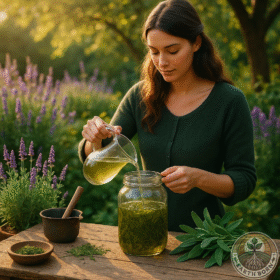
Wormwood (Artemisia absinthium)
🌱 Intro 🌱 Introduction and HistoryWormwood (Artemisia absinthium), often called absinthe wormwood or green ginger, is a silvery perennial herb native to Eurasia. It’s one of the oldest medicinal herbs, dating back to ancient Egypt and Greece, where it was used in religious rituals and healing. During the 19th century, it rose to fame as the key ingredient in the controversial alcoholic drink absinthe. Today, wormwood is cultivated across the globe, including South Africa, valued both for its beauty and its bitter medicinal qualities. 💊 Medicinal BenefitsWormwood contains powerful bioactive compounds like thujone, absinthin, and artemisinin. It has traditionally been…
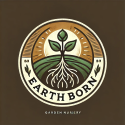

 **Meet Sprout!** Sprout is your friendly gardening companion at Earthborn, always ready with helpful advice on plant care, medicinal herbs, and natural gardening solutions. From seedling to harvest, Sprout provides expert guidance to nurture your garden and your well-being—making gardening easy, fun, and naturally rewarding.
**Meet Sprout!** Sprout is your friendly gardening companion at Earthborn, always ready with helpful advice on plant care, medicinal herbs, and natural gardening solutions. From seedling to harvest, Sprout provides expert guidance to nurture your garden and your well-being—making gardening easy, fun, and naturally rewarding.
